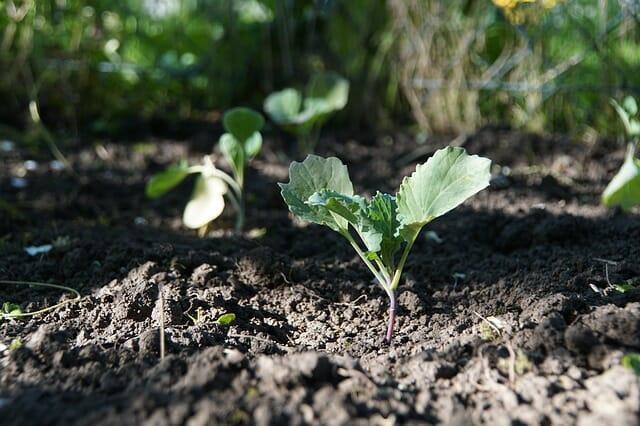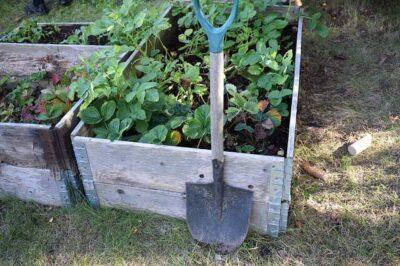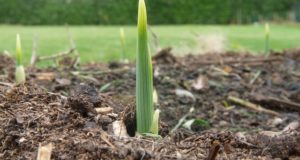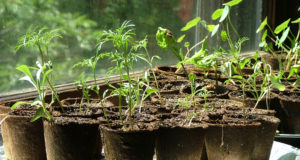As more and more households move toward self-sufficiency, there’s a pressure to be able to grow it all, right in your own backyard. If you live in a particularly warm or cold hardiness zone, though, there are certain things that you’re told you just can’t grow successfully.
People living in the north country want to grow peaches, while those in the California heat yearn for rhubarb.
But hardiness zones don’t have to be that limiting. With a few simple tricks, you can stretch your hardiness zone and grow things you never thought possible. Though you may never be able to grow mangoes in Vermont, with effort you can increase (or decrease) your hardiness zone by one zone to dramatically expand the types of crops available on your own homestead.
Growing Warm-Weather Crops in Cold Climates
For warm-weather crops, it’s important to understand exactly why they’re considered incompatible with your zone. Is it that the minimum annual temperature in the winter gets too low? Is the growing season just not long enough? Maybe the growing season is long enough, but it’s a fruit tree that flowers too early in the spring and the blossoms are killed by late frosts before they can set fruit. Perhaps the growing season is long enough, but it’s either too rainy or soils never seem to warm up enough to keep the plants happy.
The All-Natural Fertilizer That Can Double Your Garden Yield!
All of these represent very different problems with different solutions.
It Gets Too Cold
If the minimum winter temperature gets too cold, which can be a problem for some perennial crops and fruit trees, then you need to find a micro-climate that stays just a bit warmer than the rest of your land. Even small yards have warm spots. If you have a pond, stream or fountain, the water has a moderating effect on temperature and plants near them will stay warmer on the coldest days.
Perhaps your house has a brick wall that absorbs heat during the day and can help moderate the temperatures at night. Espaliered trees, or trees that are pruned to grow flat against a wall, were developed for this reason. They help to maximize the moderating effect of warm walls and allow you to grow trees that shouldn’t thrive in your region.
Growing Season Isn’t Long Enough
This is one of the easiest problems to solve. If your growing season isn’t long enough for long-season tomatoes or really big pumpkins, the solution is as straightforward as the problem. Just extend your growing season. There are many simple ways to do this, like starting transplants indoors, using cold frames or mini-greenhouses, or taking advantage of row covers to extend the season early in the spring or late in the fall when there’s risk of frost. Speaking of that problem …
Late Frosts
Though it may seem counter-intuitive, if you’re plagued by late frosts that kill your fruit tree blossoms, the best thing to do is keep your fruit trees colder. Provided they can take the coldest winter temperatures in your area, planting them in a cold pocket or a bit of shade will prevent early spring heat from causing them to break bud. If they break bud later, then they’ll be less likely to flower early and lose blossoms to late frosts.
Too Little Heat Or Too Much Rain
For annual crops especially, too little summer heat or too much rain can be a problem. Raised beds stay warmer and dryer than the surrounding soil and can be a solution if it’s just a little bit too cold or wet. For more warmth and dryer conditions, consider a small hoop house or row covers, or for a quick and easy solution, try black plastic row covers to both heat the soil and allow extra rain to run off.
Growing Cold Weather Crops in Warm Climates
While keeping things warm enough is a problem in the north country, some plants require winter frosts or a chilling period to cause them to break dormancy in the spring. Cherries, for example, need a certain number of chilling hours each winter so that they’ll produce in the spring. Other crops, like rhubarb, require winter frosts to go dormant in the soil and regenerate.
Low-Chill Varieties
By choosing low-chill varieties, you can extend your growing capacity to plants that otherwise wouldn’t experience enough chill days to thrive. Cherries often require 500+ chilling hours to grow, but some varieties, such as “Royal Lee” and “Minnie Royal,” require only 200-300 hours of chilling time. That can make a big difference if you only have a few cold days to work with.
Creating Artificial Chilling Days
If your climate doesn’t even have 200-300 chill hours, like in some parts of Texas and Southern California, you can create artificial chill days mid-winter. You don’t actually need to get the soil to freeze to count as a chill day. Temperatures below 45 degrees Fahrenheit work great.
Need Non-GMO Seeds? Get Them From A Company You Can Trust!
Plant the tree in the coolest part of your yard, ideally with some shade. Keep some milk jugs filled with water in your freezer and when it’s going to be a cold day, but perhaps not quite below 45, bring them out and make a circle around your tree’s trunk on the ground. When they’ve defrosted, bring them back in, refreeze and repeat. This will allow you to create an artificial cold spot that might just be enough to get you fruit in the hottest climates.
Digging Up Perennials & Refrigerating
In northern climates, digging up perennials and forcing them in the winter is a normal practice. Dig up rhubarb roots and store them indoors in the refrigerator or root cellar. Then, set them by the wood stove to “force them” to grow mid-winter for a cold weather treat. Gardeners in hot climates can make use of this, too.
Rhubarb, in particular, requires 500 chilling hours (or roughly 20 days) at 28 to 45 degrees each winter. In the early winter, cut off all the shoots and leaves and dig up the roots. Place them in a plastic bag in the refrigerator for about a month and then replant.
What tricks do you use? Share your tips in the section below:
 Off The Grid News Better Ideas For Off The Grid Living
Off The Grid News Better Ideas For Off The Grid Living





